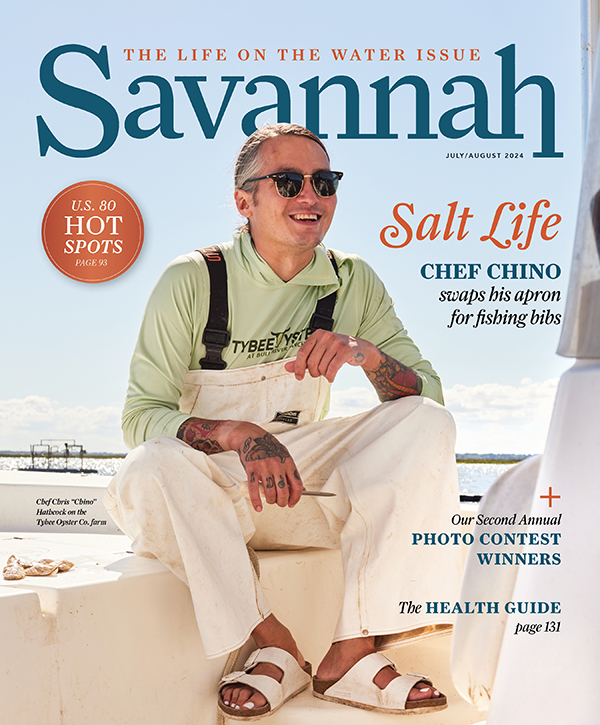An unexpected botanical discovery on Ossabaw Island reveals a direct connection to Georgia’s colonial past. By Allison Hersh. Photos by Izzy Hudgins.
Ossabaw Island Indigo Day Trip
September 24 and 25, 9 a.m. to 4 p.m.
Registration opens August 1.
To sign up, go to ossabawisland.net.
While walking along Ossabaw Island’s north end in 2009, a nondescript shrub with tiny green leaves and delicate white flowers caught Jim Bitler’s eye.
The island’s late manager and caretaker sent the plant to Clemson University for botanical analysis. Much to his surprise, he discovered that this hardy annual was, in fact, a living remnant from Ossabaw Island’s original 18th-century indigo plantation.
“We’ve since found bits and pieces of indigo all around the island,” says Paul Pressly, director of the Ossabaw Island Education Alliance and author of On the Rim of the Caribbean: Colonial Georgia and the British Atlantic World. “This is what provided the blue dye for the British textile industry in the 18th century. It was the gold standard.”
Color of Money
An important part of Georgia’s agricultural economy before the American Revolution, Ossabaw Island indigo was grown, harvested, processed and molded into bricks of highly prized dye that could easily be shipped to England. In the mid-1700s, the British government even offered a bounty of six pence for every pound of indigo exported from Georgia and South Carolina, creating a boon for colonial planters.
As a result, indigo fields flourished on Georgia’s sea islands of Ossabaw, Skidaway and Hutchinson in the 18th century. Local planters typically cultivated rice along low- lying tidal marshes and harvested Indigofera suffruticosa, a variety of indigo that originates in Central and South America, in upland areas along the coast.
A flowering plant with more than 700 species around the world, indigo thrives in tropical and subtropical climates. The last commercial indigo was produced on Ossabaw Island in 1795, edged out by a far more lucrative crop: cotton.
“Sea Island cotton became the hot commodity,” Pressly explains, “and Ossabaw Island became a giant Sea Island cotton plantation.”
To Dye For
Twice a year, however, Ossabaw Island turns back the clock to celebrate the vivid appeal of colonial indigo, welcoming visitors to attend special workshops focusing on this heirloom crop. Attendees learn the history of this sought-after plant, process raw indigo and dye T-shirts, yarn and fabric that brilliant shade of blue.
“It’s fascinating to step back in time and learn about the 18th-century process,” says Elizabeth DuBose, executive director of the Ossabaw Island Foundation. “Plus, people always love going to Ossabaw.”
Fiber artist and indigo enthusiast Donna Hardy leads the instruction, guiding participants through the artisanal, hands-on indigo dye experience.
“This day trip is an integration of art and science,” says DuBose. “It’s a wonderful opportunity to learn more about this old world plant that was naturalized on Ossabaw Island.”



